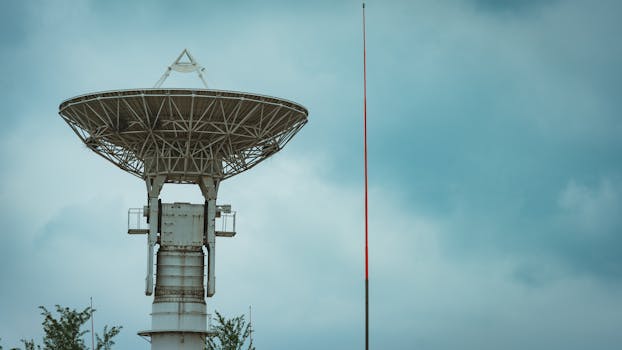Exploring the Power of GEO Satellites in Modern Technology

GEO satellites, or Geostationary Earth Orbit satellites, are a type of satellite that orbits the Earth at an altitude of approximately 36,000 kilometers. At the beginning of our discussion on GEO satellites, it is essential to understand that these satellites are designed to remain stationary in the sky, relative to a fixed point on the Earth’s surface, allowing them to provide continuous coverage of a specific region. This unique characteristic makes GEO satellites an ideal solution for a wide range of applications, including telecommunications, navigation, and weather forecasting.
GEO satellites have been in use for several decades, with the first Geostationary satellite, Syncom 2, launched in 1963. Since then, hundreds of GEO satellites have been launched, providing a wide range of services to people around the world. One of the primary applications of GEO satellites is in telecommunications, where they are used to transmit data, voice, and video signals across the globe. GEO satellites are particularly useful for providing broadband internet access to remote and underserved areas, where traditional fiber-optic connections are not available.
In addition to telecommunications, GEO satellites are also used for navigation and weather forecasting. The Global Positioning System (GPS), for example, relies on a network of GEO satellites to provide location information to users around the world. Similarly, weather satellites in GEO orbit are used to monitor cloud patterns, track storms, and predict weather conditions. These satellites are equipped with advanced sensors and cameras that can capture high-resolution images of the Earth’s surface, allowing meteorologists to track changes in the weather and provide accurate forecasts.
GEO satellites have also played a critical role in the development of modern telecommunications systems. They have enabled the creation of global networks, allowing people to communicate with each other instantly, regardless of their location. The use of GEO satellites has also facilitated the growth of international trade and commerce, by providing a reliable and efficient means of communicating with business partners and customers around the world.
The impact of GEO satellites on our daily lives is undeniable. From the way we communicate with each other, to the way we navigate our surroundings, GEO satellites have become an integral part of modern life. They have also enabled the creation of new industries and services, such as satellite television and radio broadcasting, which have become an essential part of our entertainment and information landscape.
In conclusion, GEO satellites are a vital component of modern technology, enabling global communication, navigation, and weather forecasting. Their impact on our daily lives is significant, and their applications continue to expand into new areas, such as earth observation and space exploration. As technology continues to evolve, it is likely that GEO satellites will play an even more critical role in shaping the future of our planet.
The development of new satellite technologies, such as high-throughput satellites (HTS) and very high-throughput satellites (VHTS), is expected to further increase the capabilities of GEO satellites. These new satellites will offer faster data speeds, greater capacity, and more efficient use of bandwidth, enabling the provision of even more advanced services, such as ultra-high-definition television and high-speed internet access.
Furthermore, the use of GEO satellites is not limited to commercial applications. They are also used by governments and international organizations for a range of purposes, including disaster response, environmental monitoring, and military communications. The ability of GEO satellites to provide continuous coverage of a specific region makes them an ideal tool for monitoring and responding to natural disasters, such as hurricanes, earthquakes, and tsunamis.
Overall, the importance of GEO satellites in modern technology cannot be overstated. They have revolutionized the way we communicate, navigate, and understand our planet. As we look to the future, it is clear that GEO satellites will continue to play a vital role in shaping the course of human history.
The future of GEO satellites is exciting and full of possibilities. With the development of new technologies and the increasing demand for satellite-based services, it is likely that we will see even more innovative applications of GEO satellites in the years to come. From providing broadband internet access to remote and underserved areas, to enabling the creation of new industries and services, GEO satellites will continue to be a driving force behind technological advancement and economic growth.
In the field of telecommunications, GEO satellites are expected to play a critical role in the development of 5G networks. The use of GEO satellites will enable the provision of high-speed internet access to remote and underserved areas, where traditional fiber-optic connections are not available. This will help to bridge the digital divide and provide equal access to information and communication technologies for people around the world.
In addition to their use in telecommunications, GEO satellites are also expected to play a key role in the development of new industries and services, such as satellite-based earth observation and space exploration. The use of GEO satellites will enable the creation of high-resolution images of the Earth’s surface, which can be used for a range of applications, including environmental monitoring, disaster response, and urban planning.
In conclusion, the future of GEO satellites is bright and full of possibilities. With their unique capabilities and versatility, GEO satellites will continue to play a vital role in shaping the course of human history. From providing broadband internet access to remote and underserved areas, to enabling the creation of new industries and services, GEO satellites will remain an essential component of modern technology for years to come.



